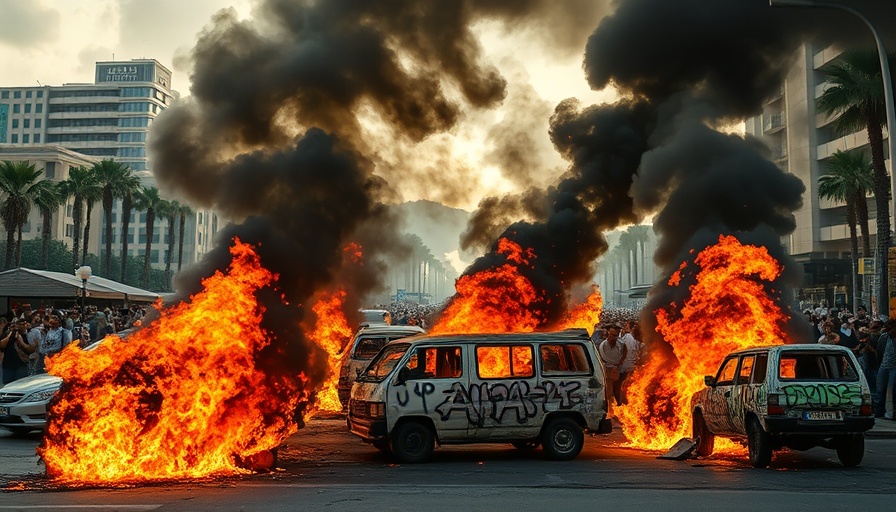
Protests Ignite in the Heart of Los Angeles
This weekend, a wave of unrest swept across Los Angeles, fueled by protests against aggressive ICE immigration raids. Demonstrators flooded the streets, expressing their dissent not only against the federal actions but also against the technology that activist groups claim represents an extension of governmental surveillance. This tension manifested dramatically when several Waymo robotaxis and Lime e-scooters were set ablaze, a stark reminder of the growing intersection between technology and social activism.
The Vandalism of Technology: A Symbolic Gesture
On the evening of June 9, protesters targeted Waymo’s autonomous vehicles parked on Los Angeles Street. Eyewitness reports indicate that five Waymo vehicles were vandalized: tires slashed, windows shattered, anti-ICE graffiti painted, and finally set afire. The incident culminated in a cacophony of honking horns as the vehicles, perceived not merely as transport options but as symbols of surveillance and control, were besieged. This acts as a chilling reminder that emerging technologies are often embroiled in the socio-political climate.
Understanding the Motivations Behind the Unrest
While Waymo vehicles have faced vandalism previously, this specific incident intertwines with broader social movements. The protests, which began on June 6, were ignited by a series of aggressive ICE raids that resulted in the detention of over 100 immigrants. Notably, protesters expressed anger that law enforcement has employed footage from autonomous vehicles to assist in crime investigations, making these cars a focal point for their grievances against immigration enforcement tactics. This incident raises a critical question: Are the advancements in technology ultimately supporting a system that suppresses marginalized communities?
Risks of Vandalism: The Consequences Beyond the Flames
The Los Angeles Police Department has voiced concerns regarding the safety issues posed by setting fire to lithium-ion batteries found in electric vehicles. These batteries can release toxic gases such as hydrogen fluoride when burned, creating health dangers not only for the protesters but for bystanders in the vicinity. This unintended consequence underscores the complexities inherent in demonstrations and raises critical points about the safety of both technology and the motivations steering these protests.
Waymo’s Response and Corporate Accountability
In light of the vandalism, Waymo announced its intent to pursue criminal charges against those involved in the destruction of its vehicles. Company officials have noted their discussions with the LAPD about seeking damages for the vandalism. However, this has sparked debate regarding corporate responsibility, especially concerning the technology companies’ roles in monitoring and policing society. Will companies like Waymo prioritize their bottom line over the communities in which they operate?
Shifting Perceptions of Autonomous Technology
The incidents of vandalism against Waymo during this protest highlight a critical turning point in public perception regarding autonomous vehicles. Once seen as the future of public transport, they are now frequently viewed through a lens of distrust. This change in perception has profound implications for the growth of the tech industry, particularly for companies integrating advanced technologies in urban settings. As society grapples with the challenges of automation, these incidents may serve to galvanize public discourse around ethical technology use in the face of both civil rights issues and corporate capitalism.
The Future of Urban Mobility amidst Social Strife
As protests continue and tensions mount, the future of urban mobility remains at a crossroads. The destruction of Waymo vehicle technology reflects larger societal divides regarding who benefits from automation and whose rights are prioritized. As cities around the world integrate smart technologies into transport systems, the challenge stands: how can we ensure that this advancement does not harm society’s most vulnerable populations? The unfolding events in Los Angeles may serve as a pivotal moment in re-evaluating this balance.
 Add Row
Add Row  Add
Add 



Write A Comment